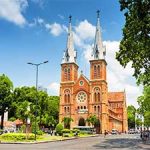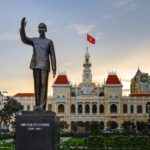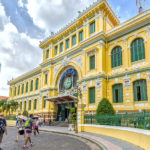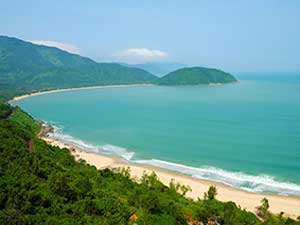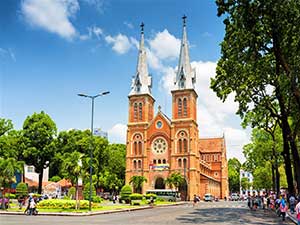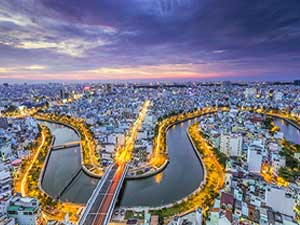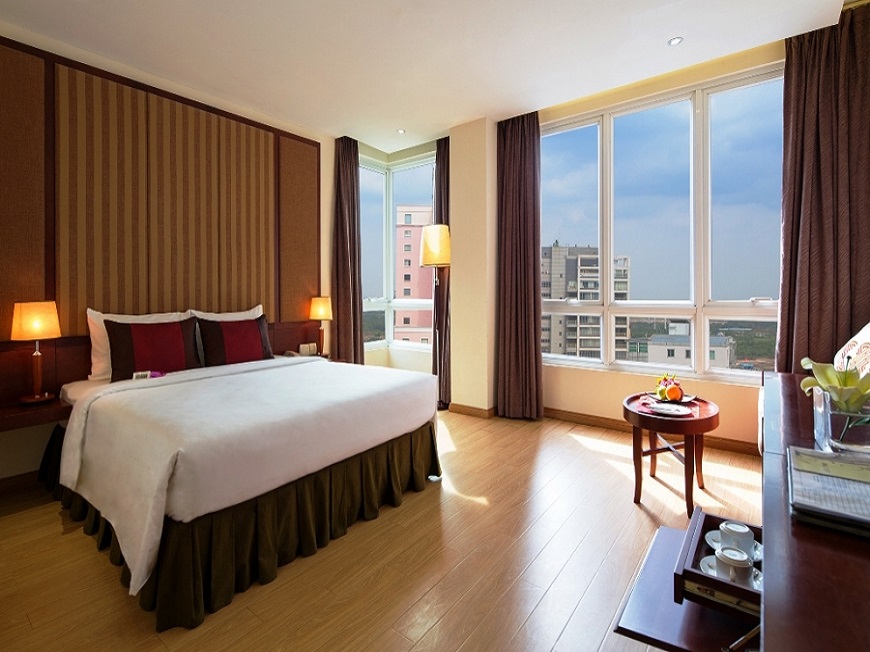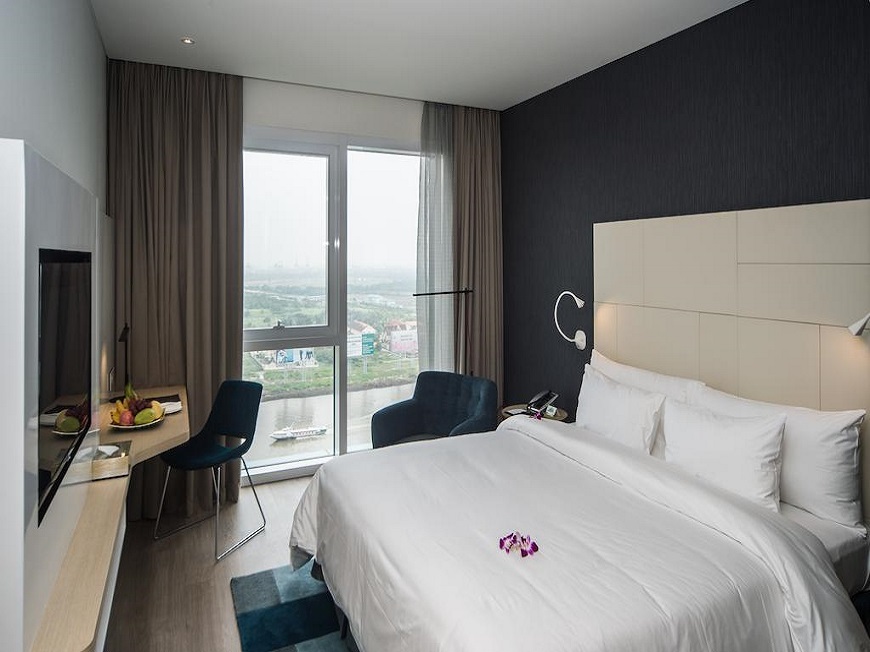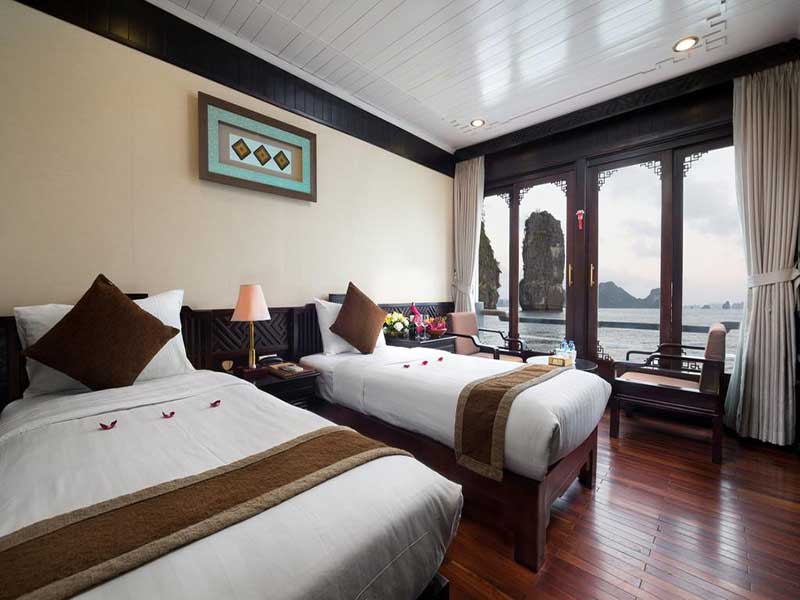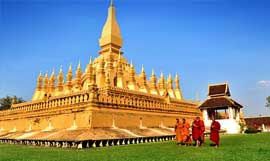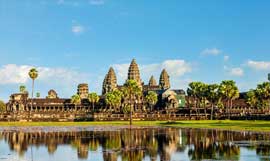Ho Chi Minh City is considered as the youngest and the most dynamic city of Vietnam. Coming to this city, tourists may see various high-rise buildings in close proximity, amusement parks, crowded shopping centers, as well as ancient villas and traditional markets existing for hundreds of years. This city is known for two names, which are Saigon and Ho Chi Minh city, then what is the correct name? This question makes many international tourists coming to Vietnam want to know the answer. The following article will provide you interesting information.
In 1698, The Nguyen Lord appointed Marshal Nguyen Huu Canh to the Southern land, giving birth to the city of Saigon. In April 1861, after the capture of Gia Dinh, Admiral Léonard Charner issued a decree defining the boundaries of Saigon, including Saigon and Ben Nghe. After 1956, the name Saigon was used to refer to both these lands. Saigon is a historical name, at the same time, it is the reminiscent of a traumatic and colonized past of Vietnamese nation. Saigon is now sometimes referred to as the semi-formal name of the city located in the south of the country, starting with only a small market of ethnic Chinese who settled in Vietnam.

Although there are no accurate conclusions about the origin of the name Saigon, but there are many theories to explain for this name. Among many explanations, there are three most common clarifications, namely “Town in the middle of the forest”; “The florish land” and “Tribute of the west”. We find that the indigenous people are brilliant to name this land by the familiar things in their spiritual life.
To replace the old by the new, go through the past, come towards a beautiful future, the freedom and peace, Saigon has been renamed, honored to take the name of the great president of Vietnamese nation. This wish is reflected in the People’s Petition signed by 57 South people. Until the complete liberation of the South, unification of the country – Vietnam, the story of renaming was more essential.
In the August Revolution; Saigon – Gia Dinh, on behalf of country, fired the first shot, beginning the long-term national resistance war of Vietnamese nation. Saigon – Gia Dinh was also the last strategic point of the war against the American imperialist, successfully ended the people’s democratic revolution, unified the country by the historic Ho Chi Minh City campaign on April 30, 1975, let the whole country go to socialism.
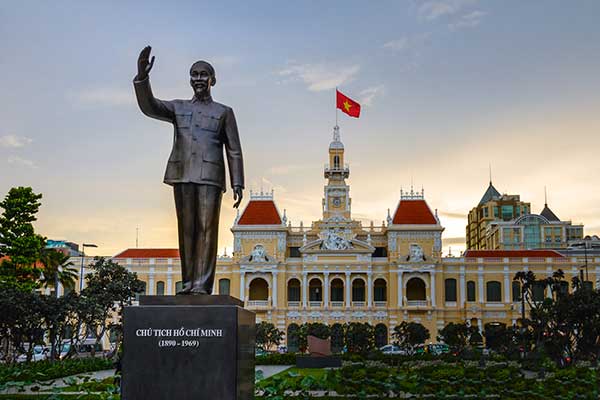
From April 30, 1975, the Republic of South Vietnam was abolished and the South Vietnamese Revolutionary Government of South Vietnam governed. Saigon, Gia Dinh and 2 districts of Cu Chi and Phu Hoa, under the administration of the Republic of Vietnam, were merged into an administrative unit called Saigon – Gia Dinh.
Finally, on July 2, 1976, the first National Assembly of Vietnam agreed to change the country’s name to the Socialist Republic of Vietnam, and renamed Saigon-Gia Dinh City as “Ho Chi Minh City “, following the name of the first president, Ho Chi Minh. Changing the name has become a great happiness for the Saigon people in particular and Vietnamese people in general. This is also a great honor for the heroic people of this city who fought bravely for the national resistance war.
Ho Chi Minh City was named after Uncle Ho, it is also to save a historical memory. From this city, Uncle Ho had to go aboard to find a way to save the country, opening 30 years of traveling across five continents. On June 5, 1911, from the Nha Rong Wharf, Nguyen Tat Thanh went off to find a way to save his country.
At that time, “Saigon City” was still underdeveloped with the remnants of the old regime, the life of the people had to suffer from the poverty, then today “Ho Chi Minh City” has become a large city, having many potentials in a lot of areas. A new name has opened up a new look. Ho Chi Minh city today is different from Saigon in the past. The difference is not just a change of name, it’s a process of reformation. Ho Chi Minh City – that name has become a pride.
Explore more: Biking places around Hanoi


